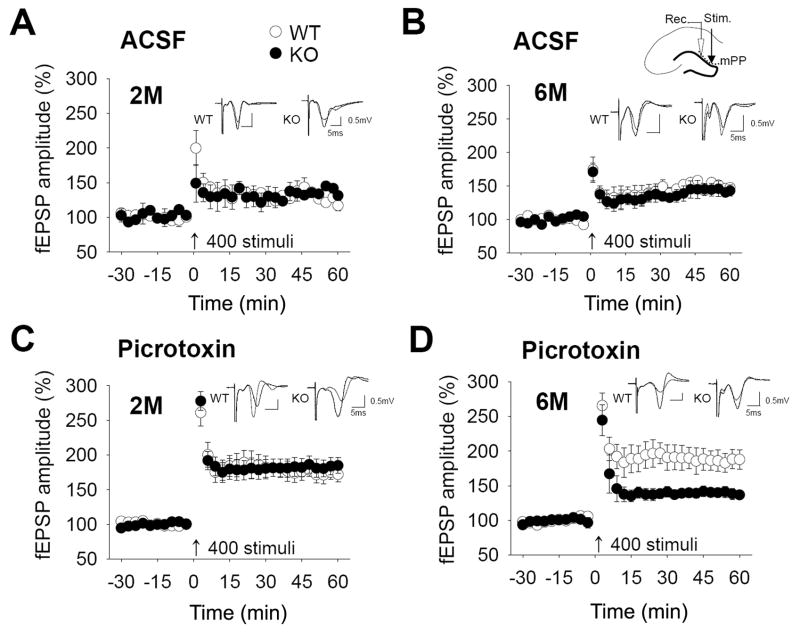Fig. 4.
Electrophysiological properties of the mPP in Bax-KO hippocampus. A, B: Time-course changes in fEPSP amplitude following high-frequency stimulation (4 trains, 100 Hz for 1 sec) in 2-month old (A, n=4, 5 slices in WT, n=5, 5 slices in KO), and 6-month old (B, n=3, 3 slices in WT, n=3, 3 slices in KO) groups in the ACSF condition. The small diagram in B shows the sites of stimulation (black arrow head) and recording (white arrow head). C, D: LTP profiles in 2-month old (C, n=5, 7 slices in WT, n=8, 11 slices in KO) and 6-month old (D, n=6, 8 slices in WT, n=11, 18 slices in KO) groups in the presence of picrotoxin (50 μM), a GABA blocker. Representative recordings at times 0 and 60 min are shown in the inset. All LTP profiles are expressed as mean±s.e.m of average values of a 3-min block.

